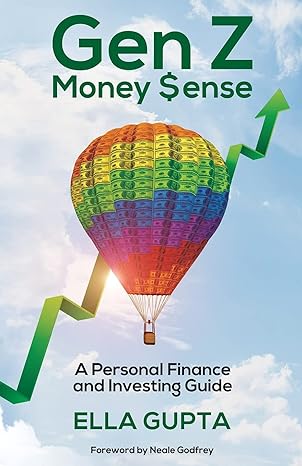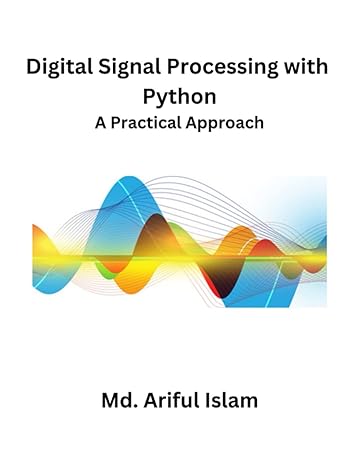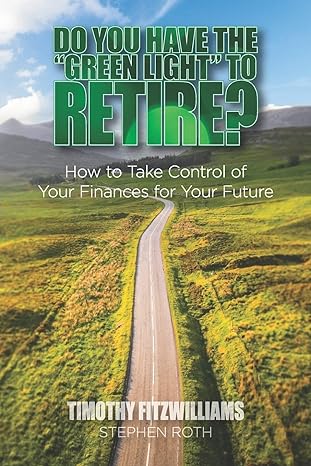Go back


Personal Investing The Missing Manual(1st Edition)
Authors:
Bonnie Biafore, Amy Buttell, Carol Fabbri

Cover Type:Hardcover
Condition:Used
In Stock
Include with your book
Free shipping: April 04, 2024Popular items with books
Access to 3 Million+ solutions
Free ✝
Ask 10 Questions from expert
200,000+ Expert answers
✝ 7 days-trial
Total Price:
$0
List Price: $5.15
Savings: $5.15(100%)
Book details
ISBN: 1449381782, 978-1449381783
Book publisher: O'Reilly Media
Get your hands on the best-selling book Personal Investing The Missing Manual 1st Edition for free. Feed your curiosity and let your imagination soar with the best stories coming out to you without hefty price tags. Browse SolutionInn to discover a treasure trove of fiction and non-fiction books where every page leads the reader to an undiscovered world. Start your literary adventure right away and also enjoy free shipping of these complimentary books to your door.
Personal Investing The Missing Manual 1st Edition Summary: Did your investments take a hit in the recession? You're not alone. Between 2007 and mid-year 2009, the average 401K lost 31% of its value. Ouch. It's time to take control of your investments with Personal Investing: The Missing Manual. Financial experts agree that with the right guidance, consumers can make investments better than many professionals. This lively and easy-to-understand guide gives you the confidence, tools, and insight you need to evaluate financial products and make smart investments that target success over the long term. You'll learn how to set long-term goals for critical, high-cost events such as retirement, your children's education, and future health care needs. Then you'll learn what types of investments will best help you achieve those goals. In step-by-step fashion, this book shows you how to research mutual funds, stocks, bonds, and other financial products to create a portfolio of diversified investments. Get crystal-clear, practical advice from personal finance expert Bonnie Biafore, author of Missing Manuals on the Quicken personal-finance program and QuickBooks business finance program Understand why you need to invest -- Biafore shows you how savings accounts simply won't outpace inflation or give you the returns you need for long-term goals Learn how to evaluate and buy traditional investments, such as stocks, bonds, and mutual funds Discover lesser-known investments, such as index funds and exchange-traded funds, which cost you less and provide more tax advantages Choose the best funds offered by your employer for your 401K, and learn how to get the greatest tax advantages How Investing Makes Your Money Work Harder With inflation’s 3.41% price increases compounding year after year, figuring your expenses produces some galactic numbers. Sadly, you can’t choose whether to accept the compounding of inflation. But what if you could use compounding to inflate the money you save? It turns out that you can, by investing your money and reinvesting all your earnings. You can choose the compounding of the returns you earn on your money, so it’s important to understand just how powerful this strategy is. True, investment returns aren’t as steady as the inflation rate. Some years are better than others, and some years are downright dogs. But for now, assume that your investments increase 7% each year (that’s the return most financial planners tell their clients they can expect on a diversified investment portfolio). Say you seed a retirement account with $10,000, as the table below shows. If you earn 7% the first year, you’ll have $10,700 at the end of the year. The second year, you earn $749 (7% on $10,700) and end up with $11,449. If you earn 7% each year for 40 years (from the time you start working until you retire), you’d have almost $150,000! That’s $140,000 of earnings on a single $10,000 investment. On the other hand, what if you invested $10,000 and earned 7%, but withdrew each year’s earnings? (That return is called simple interest, because you earn the same amount on your original investment each year.) You’d earn $700 each year for 40 years, for total earnings of $28,000 on your original $10,000 investment. By letting your investment returns compound, your total earnings are five times what you’d earn with simple interest. The graph below shows how your nest egg grows like wildfire when you let your earnings compound. Compounding is a powerful force, even when the rate is small, as you’ve seen with inflation. But this technique really shines when you earn higher returns, like the 7% from a diversified portfolio, and give your portfolio time to mature. The graph below shows how a $10,000 nest egg grows when you put your money in diversified investments, bonds, money market funds, and savings accounts. Compare the line for inflation to see how investing can help you beat the steady rise in prices. You can see how investments start to take off after 15 years. That’s compounding at work, and that’s why it’s important to start investing for long-term goals as early as you can. Investing for the Long Term Although well-diversified investing works like magic when you give it time, it doesn’t make sense for short-term goals. That’s because you have to accept some risk to earn higher returns. Investments in the stock market can decrease during a single year--and do so every several years. The good news is that the risk of losing money decreases the longer you keep your money invested (think decades). During recessions, the stock market can really tank, like the almost 50% drop it suffered in 2001. You wouldn’t want to see half your nest egg go away the year before you retire. However, since 1929, the average annual return on stocks is more than 11% despite battering from the Great Depression and several recessions. Besides, a diversified portfolio isn’t invested solely in the stock market, as you’ll learn in Chapter 9. By investing in stocks, bonds, and real estate, you won’t see drops as big as the ones for stocks alone. Chapters 9, 10, and 11 also tell you how to move money that you need in the next few years into ultrasafe savings so it’s around when you need it. Lots of folks would rather be certain of having a small amount of money than worry about whether a large nest egg might falter right when they need it. You might think that putting money into a guaranteed money market account means you won’t lose money. Think again. If your money doesn’t keep up with inflation, you lose buying power, which is the same as losing money.
Customers also bought these books
Frequently Bought Together
Top Reviews for Books
Muhammed shafiqi
( 4 )
"Delivery was considerably fast, and the book I received was in a good condition."










